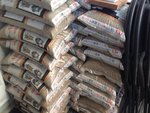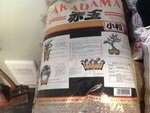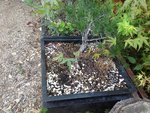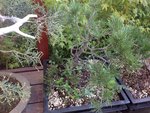Like I said, Boon is the one who popularized it here in the USA. I believe it was his idea, but I’m not sure.I don´t know who Boon is, not sure he is known much in Spain, maybe among some more international masters... Is he doing demos in international expos? I would like to see him in some videos just to get to know him better.
What I know and is a common approach for conifers and well known by most definitely in Spain is to remove the old soil in phases: sometimes to remove only half of the old soil, some people remove completely the old soil and take higher risk, some other do half and after some years the other half, and some others split it in 4 pieces and get rid of the soil fully after 4 repotting ... I think this is common knowledge among prole working with conifers as I said . And of course prices of the trees are higher if you want to sell a tree and you already took the risk of getting rid completely of the old soil and it thrives for couple of years.
Not sure to remove half of the old soil can be attributed to Boon's idea.
Boon does travel Internationally, he did one of the Noelander’s Trophy events several years ago. But he’s trying to limit his travel now and spend more time at his nursery.
More information about Boon can be found on his website including instructional videos:
Www.bonsaiboon.com




